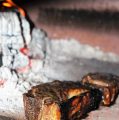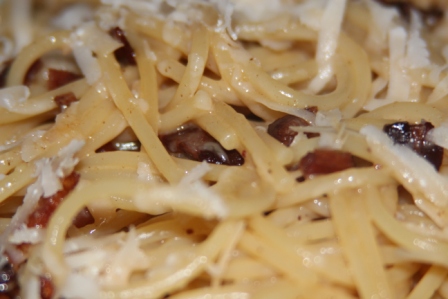 If you are interested then Harold McGee is the master of the science behind why eggs set milk and creams. McGee on Food and Cooking (an encyclopedia of kitchen science, history and culture) is the definitive book to explain it all. It is hard going but worth it if you really want to know what is going on. In case you can’t be bothered however, here are the following tips:
If you are interested then Harold McGee is the master of the science behind why eggs set milk and creams. McGee on Food and Cooking (an encyclopedia of kitchen science, history and culture) is the definitive book to explain it all. It is hard going but worth it if you really want to know what is going on. In case you can’t be bothered however, here are the following tips:
The egg white helps to set the custard, give it firmness and make it glossier.
The egg yolks add richness and produce a softer and creamier mixture.
If you want a set custard you can cut through you generally need some egg white.
If you are making a crème brulee in a ramekin then you can just use egg yolk as it doesn’t need turning out.
Milk needs more eggs to set as it contains more water and dilutes the egg more.
Proportions
Set custard for turning out – 1 pint of double cream to 2 egg yolks and two whole eggs
Custard for setting in a brulee – 6 egg yolks to 1 pint of double cream
Pouring custard – 6 egg yolks to 1 pint of milk
With these rules you can make a huge range of tarts, sweet and savoury. Quiches are set this way as are many fruit tarts and even cheesecakes. Once you have the idea, you can experiment, add more yolks for richness, more white for a firmer setting. It might just be about custard, but some of the best recipes are based on this. In essence all you do for most tarts is mix the cream and eggs, add salt and pepper for savoury; and sugar and vanilla for sweet. Then all you do is bake them in a pastry case until just set. Generally around 160C for about 20 minutes, but check along the way. For a custard, you boil the milk or cream first, then pour it onto the eggs already mixed with sugar and vanilla. This mixture then goes back into the pan and is heated until it starts to thicken. It should coat the back of a wooden spoon. Don’t boil it as it will scramble. Cool it quickly. Again the more you make it the easier it becomes to judge. The creme brulee recipe covers this in more detail with volumes.

